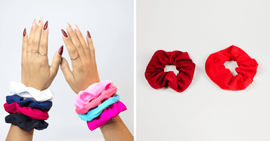The textile industry is part of our life from the moment we are born and manages to satisfy one of our greatest needs. In addition, it was one of the first industries to develop and provides work for millions of people.
But are you aware of the other side of the story? At Ola Lily we know the importance of a garment but we also know how harmful it is for the environment when a bikini reaches your hands.
In recent years, the textile industry has undergone multiple changes, it has expanded, fast fashion has taken over this sector, and as a consequence, we have less durable garments that go out of style very quickly. Unfortunately, they become waste.
The useful life of the garments is much shorter, causing a negative impact on the environment. In addition, the amounts of water they need for production are greater.
Experts define the water footprint as the total volume of fresh water used to produce products and services, together with the carbon footprint, it is one of the main indicators of the effects that an activity has on the environment.
The textile industry is one of the most water-consuming in the world. They manufacture around 80 billion garments a year in the world and 40% of them are made of cotton, a vegetable textile fiber that requires large amounts of water to grow.
To make a cotton shirt requires 714 gallons of water. If you still do not understand the magnitude, we tell you that this amount is enough for a person to drink water for 900 days.
If this were not enough, over time, human beings are polluting the water in rivers and lakes faster than nature can recycle and purify it.
It is important to mention that more than 1 billion people still do not have access to drinking water.
The textile industry's negative impact that the textile industry has on the environment will not change until we decide to act on it, both as individuals and as companies. For example, here at Ola, we use 0% water in the digital printing process, minimizing our environmental impact.
If you want to support change, try to make the most of the clothes you have and if you no longer need them, give them a second life, you can donate them or exchange them with your friends. Let's not pretend that nothing happens, let's become aware!
Find similar articles
blog

